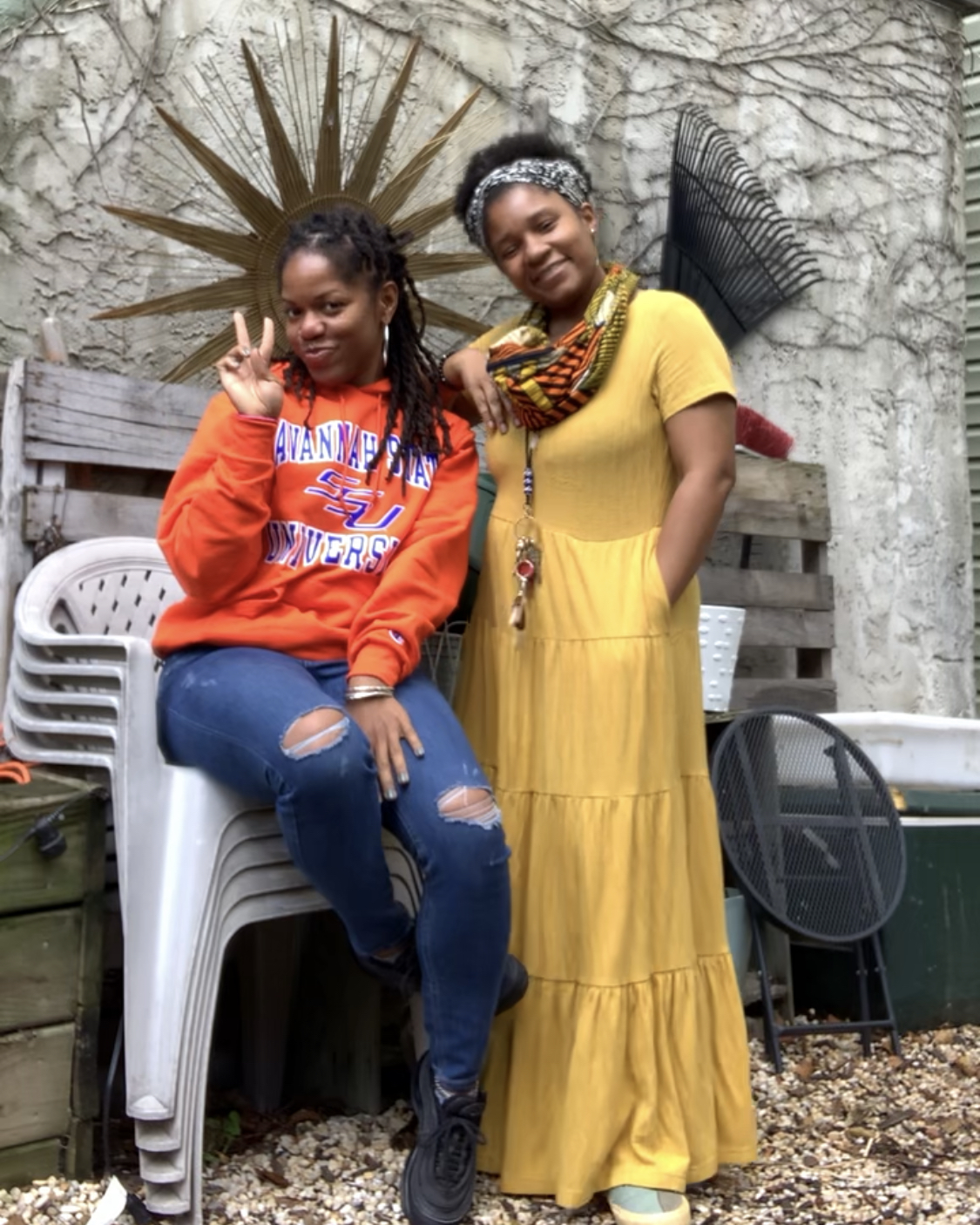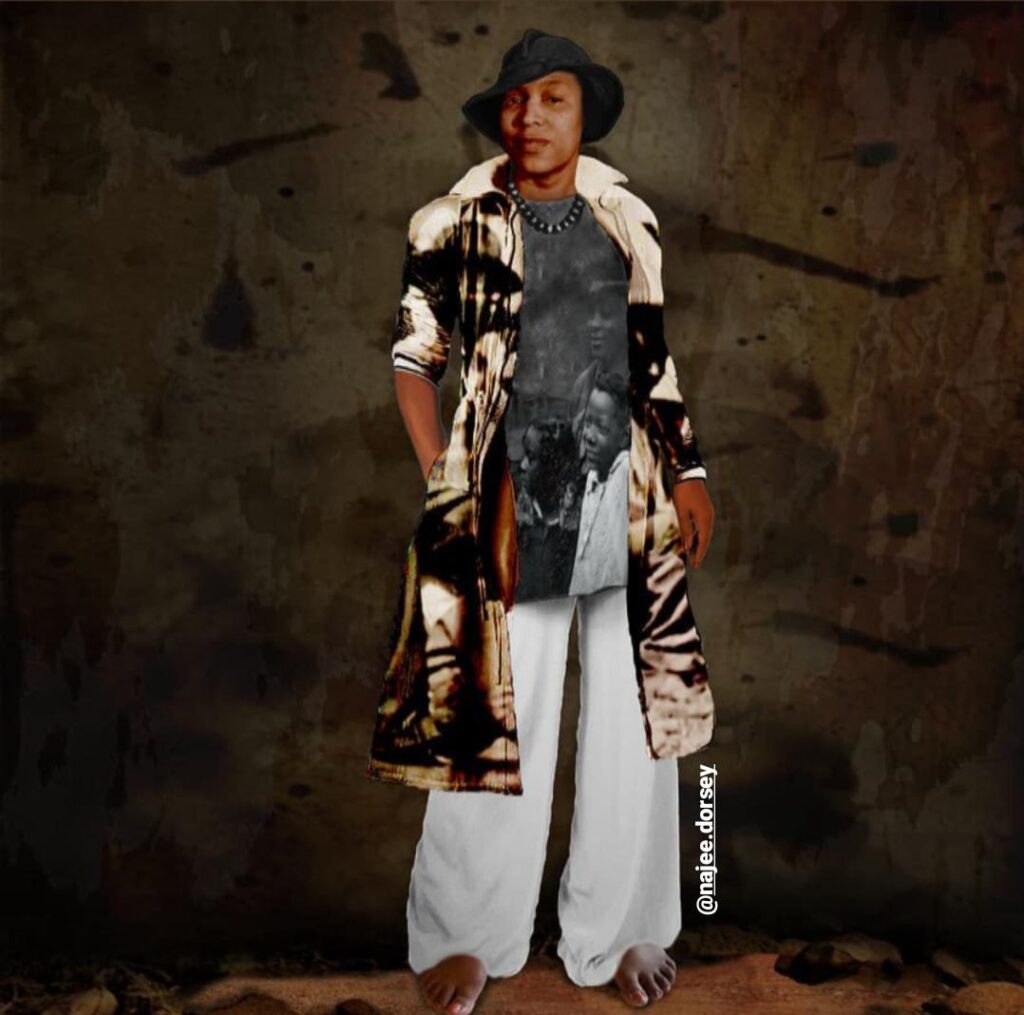In Honor of The Children of Folks Who Migrate: An Interview with Angela Davis Johnson, Pt. 2

In April of 2022, I interviewed Angela Davis Johnson about her upcoming art show in Atlanta. She named it HOTFOOT. This is Part 2 of that interview. In Part 1, she discusses what HOTFOOT means: in and outside of her art. Floating between Philly, Atlanta, and New Orleans, she exhibits HOTFOOT behavior. As someone who’s been wandering off (for hours/days/weeks) alone since I was a child, I could deeply relate.
I just got home from HOTFOOTing in Philly this past weekend and was so fortunate to “sit a spell” with Angela. On the plane back to Savannah, I reread the transcript from our interview and it hit different. It had to be reshared…and added to. So that’s what I’m doing here. If you ain’t already, read Part 1 first.
—
I rarely speak on what the dead would’ve wanted, but Zora Neale Hurston would have absolutely loved HOTFOOT. Angela was born in Orlando, mere minutes from Zora’s hometown of Eatonville. Like Angela, some of Zora’s movements were out of necessity but most were pleasure-based. Zora wasn’t afraid to travel alone—literally, yeah, considering her move from Florida to Baltimore then DC and Harlem. Can’t leave out Zora’s wanderings to New Orleans, Haiti, Jamaica, and the Georgia and South Carolina Sea Islands, but also creatively seeing as how so many of her peers criticized her intent on writing about Black people being Black people sans the white gaze. Zora was an OG hot footed nomad who boldly claimed ownership of her freed self.
As if I’d passed her a baton of my thoughts, Angela picked that thang up and took off, leaving dust tracks on a road. “I call Zora Neale Hurston the patron saint of HOTFOOT, because of the way that she was able to be in multiple spaces, not only physically but mentally. Like, the clarity to understand that there was so much power in our story, our folktales, our vernacular. Oh my gosh! I love her. Last year I went to Port St. Lucie and Fort Pierce, and I was so honored just to see and walk where she walked. She would travel through Florida with a Black woman, or alone. But that takes a certain fearlessness and bravery and clarity of your soul to be able to do that and go and gather stories. It feels like that’s my kindred spirit; that’s my kinfolk.

“Zora, Barefoot In The Souff” | Najee Dorsey | 44″ x 44″ | Photomontage and digital collage, 2020, on canvas
“I have a piece I worked on through this residency, where I’m reading her short story called Spunk. I have written just an excerpt of that story then I’m overlaying it with abstracted imagery. And it feels like such a mark-making prayer invocation to release myself from the bodies, because I’m primarily a figurative painter but stepping into abstraction. So it’s like I’m closer to that thing, you know, that release from needing to be respectable or representing aspects of us that can’t be contained, which is one glimpse. Being able to do that, during this time, has really left an impression. I felt nervous doing it because I’m known for my bodies, and I was able to create from that space as well. But there was something about these little works that I’ve been creating that just feels like a light coming on or a switch, because it helps me to lean into the prayers that I need through the work.”
While she talked, I scrolled through her older artwork online again. According to ArtPil, Angela, a self-taught artist, “incorporates body movement and sound alongside her vibrant narrative paintings which consist of portraits created with paint, scrap paper, found objects, and fabric.”

“Canebrake Ceremonies” | Angela Davis Johnson | 2019
Mesmerized by her paintings of Black women—elder and young, some in head wraps and others in locs, fros, and pigtails. None are smiling and only a few make eye contact with me. Each has facial features or body limbs that seem to be in movement themselves, enough so that I don’t see an intended person but rather my own people. In their faces and postures, I see my friends, Nichelle, Lily and Glenda. I see my Aunt Bessie and journalist/author Sarah M. Broom. A few brothers too. Then there’s “Strange Dark Garden.” In the best way possible, “Strange Dark Garden” ain’t nothing like her other artwork, yet it still somehow is.
“‘Strange Dark Garden,’ Angela said, “makes me think about the work of planting seeds and being patient enough to watch them grow, and tending and not rushing but always in a movement. That’s what I’m trying to understand more about HOTFOOT because it is that active space. It is movement. But then there’s also this question of how does one remain rooted while in motion? And so with that question before me it feels like it’s in the garden. It is in the practice of being able to tend to one’s spiritual soul garden while in movement, while traveling and being in multiple spaces.”

“Strange Dark Garden” | Angela Davis Johnson | 2022
Whenever you make room for the spirits to speak and you honor what you’re told, resources will align for you to make it happen and take it to the next level. That’s one of my core beliefs. Angela affirmed it, saying, “I knew coming that I wanted to merge my life practice—the ways of cooking, living, and being with a more of a container to be able to practice making things in another way. So I needed a studio. I reached out to Charmaine and said, ‘I want to do a mini residency. Who do I reach out to?’ She was like, ‘Girl, I got you…’
“To be able to conceptualize this and be able to see it come to life with our requests feels like the practice of knowing and movement, and then also planting and growing. This manifested from a beautiful space of making one’s request, and then watching the work come to life. Najee and Black Art in America, with the support and the ability to just show up, is so indicative to me of a Black wave. We know how to move in community. We know how to think in a collective way. And the more we do that, the more we decolonize and shed things that aren’t for our greatness and for our goodness. To me, this residency speaks to that. Even with Mint Gallery, for Danielle Deadwyler to open her space for me to be there in studio, it just kept growing.”
Angela shared a quote that she meditates on that the spiritualist and People’s Oracle, Dayna Nuckolls said during the pandemic: “‘The burden of survival is shared. It’s a shared responsibility. And in order to move life and to reshape our world, we have to do it collectively. It’s a shared burden. It is not one to do individually. We need each other.’ That’s what this residency is saying and doing. It’s saying that we need each other, and we can show up for one another. And it’s been powerful.”
—
This interview was originally posted on BlackArtinAmerica.com. I changed the structure and wording for Krak Teet. None of Angela’s words were changed though. Only mine.
